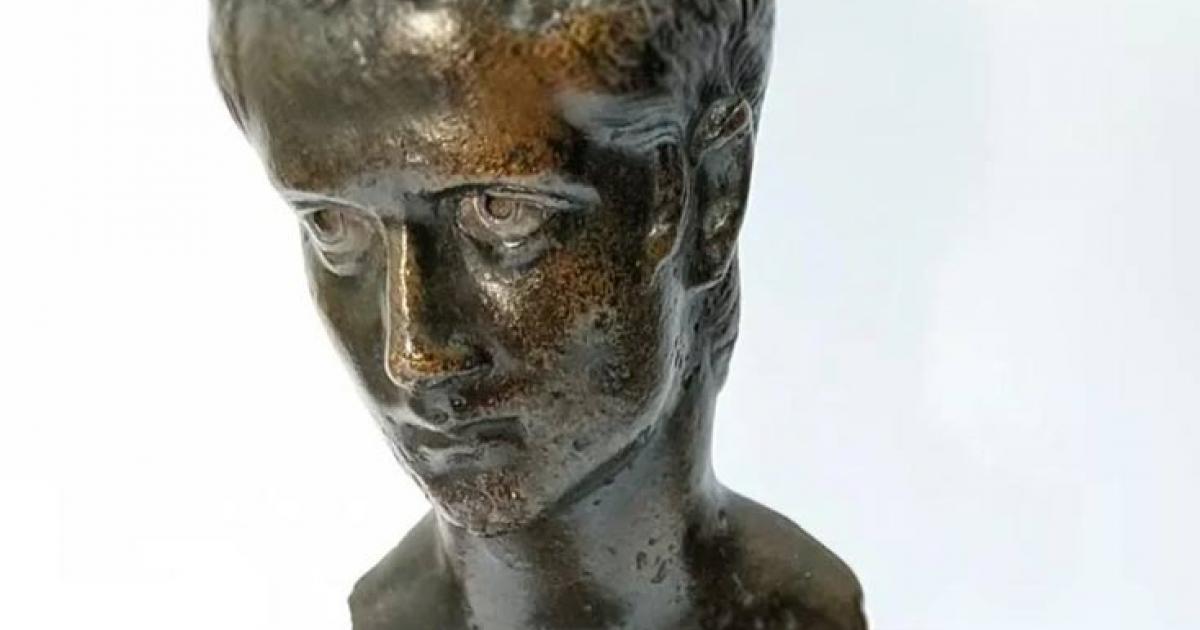
A Bronze Bust of Roman Emperor Caligula Rediscovered
Long believed to have been lost, a bronze bust of the Roman Emperor, Caligula, has been rediscovered. The bust vanished nearly two centuries ago and concludes a decade-long quest by the curator at Strawberry Hill, Dr. Silvia Davoli.
Originally gifted to the renowned writer, aesthete, and Whig politician, Horace Walpole, by the British envoy to Italy, Horace Mann, the bust was last seen by the public during the “Great Sale” of 1842. In which most of Walpole’s collection was dispersed into private hands. According to Mann, the sculpture was excavated from the ruins of Herculaneum.
- The Madness of Caligula: Rome’s Cruelest Emperor?
- The Search Is On For Caligula’s Orgy Boats Where His Twisted Fantasies May Have Been Played Out
Herculaneum was one of the two Roman towns to be buried by pumice and ash from the Mount Vesuvius eruption in 79 AD; the second being Pompeii. It is located in the modern region of Campania. Tradition states that the city was rediscovered in 1709, during the drilling of a well.

The excavated ancient city of Herculaneum. (Diego Delso / CC BY-SA 4.0)
The bronze bust was considered to be one of the crowning jewels of Walpole’s collection, changing hands several times after his death in 1797. By the 19th century, it would be misidentified as a depiction of Alexander the Great and the trail of its ownership eventually led to the Schroders investment company, where it would continue to reside unnoticed.
The breakthrough discovery came about while Dr. Davoli was preparing an exhibit dedicated to treasure hunting at Strawberry Hill:
“I was so happy when I finally saw the bronze and made the link.”
She made the connection by matching a drawing commissioned by Walpole in the 1780s to a bronze head listed in the inventory of the Schroder Collection. The drawing was created by artist John Carter and captured unique details of Walpole’s treasures. The age of the artifact was confirmed by Rupert Harris, a London-based metal conservator. Further confirmation came from Imperial Roman iconography expert, Dr. Dietrich Boschung stating:
“I’m convinced it is Caligula.”
Ascending the throne at the age of 24 in 37 AD, Caligula was notorious for his extravagant spendings, rumored sexual deviances, including incestuous relationships with his sisters, and more. His reign ended abruptly when he was assassinated by his own personal Praetorian Guard. Despite all of this, he continues to inspire numerous works in literature, film and art.

Head of the Roman Emperor, Caligula, on a 16th century bust. (Richard Mortel / CC BY-SA 2.0)
According to Dr. Davoli:
“The discovery of the Caligula’s head, one of Walpole’s most valued treasures, is truly an exciting event. Each recovered object opens the doors to new hypotheses, helping us better understand the secret life of objects and their movements through the centuries.”
The bust will be a centerpiece display at “The Art of Treasure Hunting”' exhibition, set to open at Strawberry Hill House on June 28.
Top Image: The bronze bust of Caligula. Source: Courtesy of the Schroder Collection
By Petros Koutoupis















